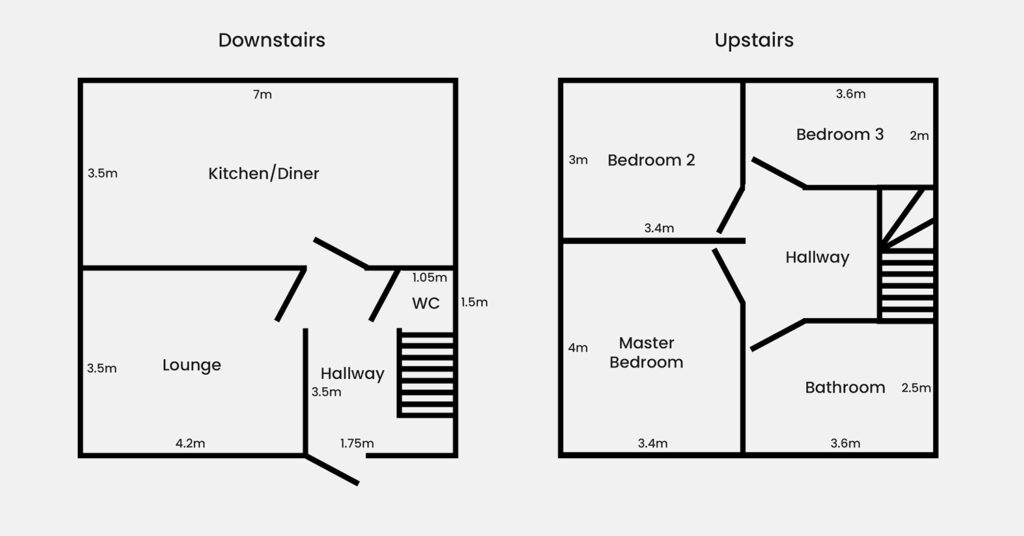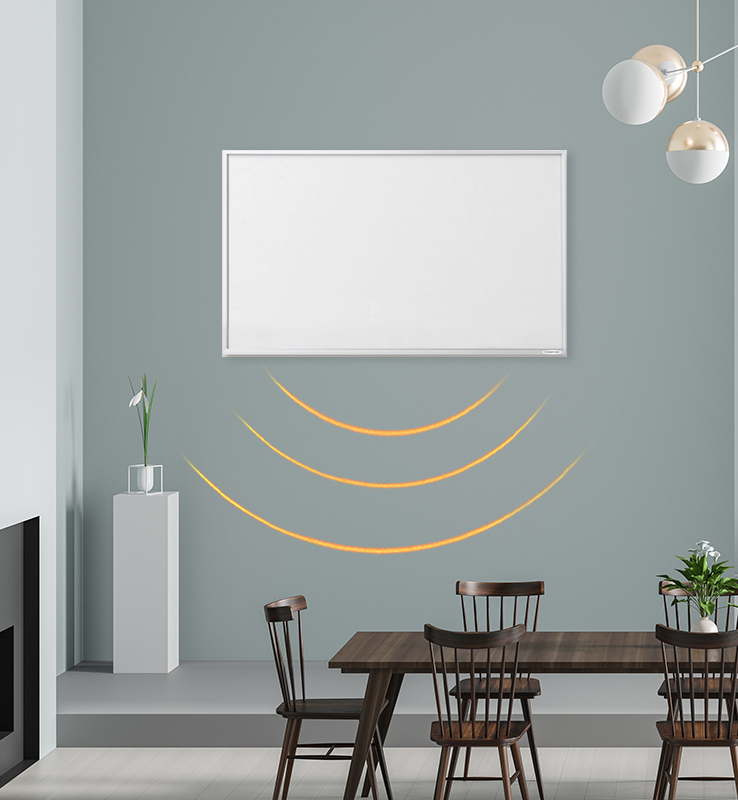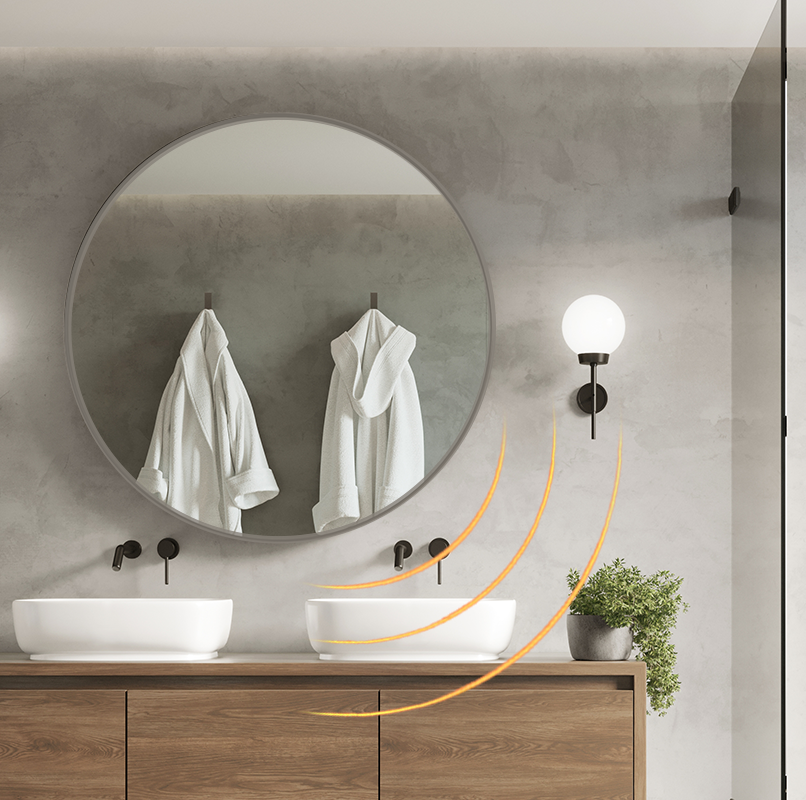The Maths
To figure out how many heaters you’ll need in a space, you need to calculate how many watts each room will need. We measure this by figuring out the volume of a room, then multiplying that volume by a specific number based on its insulation level.
You multiply by 25 for well insulated areas, 30 for moderately insulated areas, and 35 for poorly insulated areas.
Lounge
This room is where Harry spends most of his time, so it’s key that it feels comfortable. Luckily, a stylish 900W panel set over his sofa was all he needed for warmth.
Harry likes to have guests round, so it was especially important that his room look stylish. He went with a custom image panel with a print from one of his holidays. These have recently had an upgrade to ensure they’re Wi-Fi enabled, so he doesn’t have to sacrifice style for convenience.
The cost to run convection heaters in this space would be 40p per hour.
However, the cost to run infrared heaters in the lounge for the same time is 28p – a saving of 30%.



